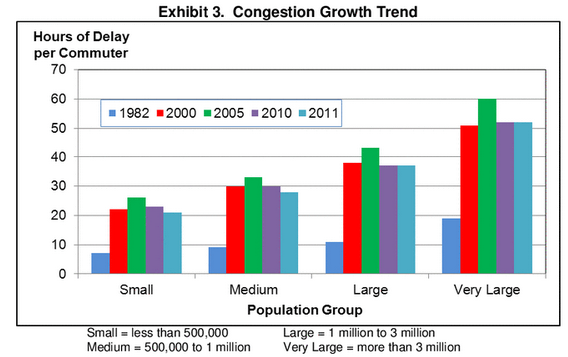That Dreaded “T” Word
Just hearing the word “traffic” is enough to make anyone feel anxious and frustrated. The U.S. transportation system heavily relies on personal vehicles, leading to daily congestion in urban areas. Traffic not only tests patience but also severely impacts the economy. A 20-minute trip can turn into a grueling hours-long ordeal due to bumper-to-bumper congestion. The problem stems from increasing vehicle numbers on outdated infrastructure unable to support modern demands.
Often overlooked, traffic congestion is a growing national crisis. To combat this, city planners must implement advanced technology to reduce the strain on public roadways.
Traffic not only tests patience but also severely impacts the economy. A 20-minute trip can turn into a grueling hours-long ordeal due to bumper-to-bumper congestion. The problem stems from increasing vehicle numbers on outdated infrastructure unable to support modern demands.
Often overlooked, traffic congestion is a growing national crisis. To combat this, city planners must implement advanced technology to reduce the strain on public roadways.
Why Is Traffic Control Important for Cities?
Congested roads negatively impact urban economies, daily life, and public safety. Traffic-related issues affect motorists, businesses, and residents alike.Major Consequences of Traffic Congestion
Increased Accidents
More vehicles on the road lead to more accidents. In many cities, traffic-related incidents are a leading cause of fatalities. Even minor collisions result in thousands of dollars in damages and delays.Air Pollution
Congestion increases vehicle emissions, degrading air quality and contributing to health issues. In some urban areas, pollution levels are so high that thick smog visibly blankets the city.Noise Pollution
Honking horns, roaring engines, and constant movement create significant noise pollution, impacting those who live and work nearby.Reduced Emergency Response
Gridlocked streets delay emergency vehicles, making it difficult for ambulances, fire trucks, and patrol cars to respond quickly, potentially putting lives at risk.Lower Productivity
Traffic congestion causes delays for workers, deliveries, and businesses. Late arrivals, missed meetings, and inefficient transport networks hinder economic productivity.How Cities Can Reduce Traffic Congestion
Many cities are leveraging smart technology to alleviate congestion. Here are some effective solutions:Adaptive Traffic Signals
Using Vehicle-to-Infrastructure (V2I) technology, traffic signals can adjust their timing based on real-time traffic flow, reducing unnecessary idling and improving efficiency.Real-Time Traffic Monitoring
Public transportation systems benefit from live traffic data, providing insights into vehicle locations, available parking spaces, and alternate routes.Smart Corridors
These road sections use technology to alert drivers about traffic conditions, accidents, estimated travel times, and upcoming weather hazards, helping them plan better.How Smart Cities Are Tackling Traffic
Cities worldwide are investing in smart technologies to ease congestion, with $41 trillion projected for smart city development by 2020. The Smart City Council emphasizes using data to enhance urban living. However, implementing smart solutions requires seamless technology integration. Cities are implementing systems like Vehicle-to-Vehicle (V2V) and V2I communication to improve road conditions. While V2V allows vehicles to communicate with each other, V2I integrates with infrastructure elements like traffic cones and signals.Key Smart City Technologies Reducing Congestion
1. Adaptive Traffic Signals
Columbus, OH, uses V2I data from government vehicles to optimize traffic light timing. This improves traffic flow and sustainability while reducing emissions.2. Real-Time Traffic Feedback
Kansas has successfully implemented free streetcars that carry thousands of passengers daily, using real-time traffic data to maximize efficiency.3. Pedestrian Tracking Systems
Cities like Las Vegas analyze pedestrian movement to optimize crosswalk signals and reduce jaywalking, improving safety and efficiency.4. V2I Smart Corridors
Wyoming has deployed V2I systems to deliver real-time alerts about hazardous road conditions, enhancing safety and traffic management.Building Safer, Smarter Cities
As urban populations grow, traffic will remain a challenge. City planners must adopt cutting-edge solutions to ensure sustainable and efficient transportation. The future of our cities depends on how effectively we manage traffic congestion today.Order your Traffic Cones Today! Call us at 800-429-9030.
